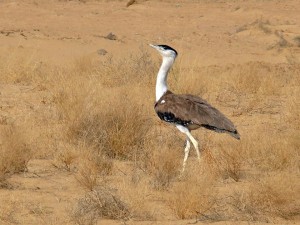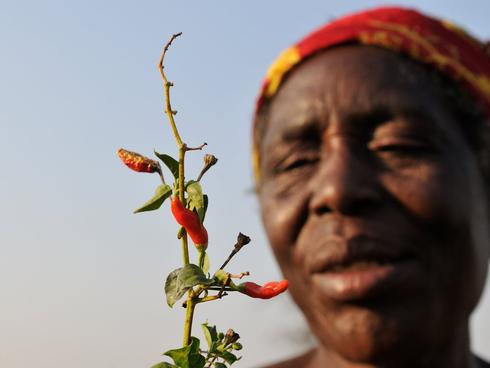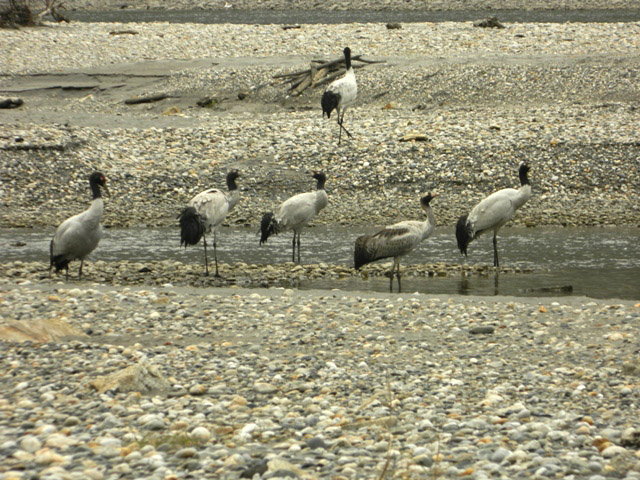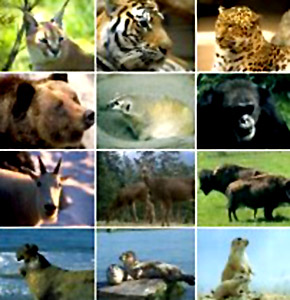 The Great Indian Bustards are India’s rarest bird species found in five states of the country. Though the government has heightened the conservation efforts to protect the species, there are a number of threats that are pushing the nocturnal birds towards extinction. In Kutch, Gujarat, a study found a population of 50 birds but also revealed that infrastructure development is just one of the many threats faced by the critically endangered birds.
The Great Indian Bustards are India’s rarest bird species found in five states of the country. Though the government has heightened the conservation efforts to protect the species, there are a number of threats that are pushing the nocturnal birds towards extinction. In Kutch, Gujarat, a study found a population of 50 birds but also revealed that infrastructure development is just one of the many threats faced by the critically endangered birds.
Under the environment ministry’s species recovery programme, the Kutch region of Gujarat was studied to know the existing population of the Great Indian Bustard in the area and also provide a guideline to the ministry to understand better the measures needed to protect it.
The findings of the study – published as guidelines by the Union Ministry of Environment and Forests for the Great Indian Bustard recovery programme are as follows,
High Tension Wires – The researchers say that the major threats to the birds are high tension electricity wires that they accidently collide with. Confirming the reports of birds dying due to collision with high tension wires, Sutirtha Dutta, a doctoral researcher at the Wildlife Institute of India, said,
“I have heard from local people of Kutch about the death of one GIB in 2008, and from the range officer of Karmala (Maharashtra) about the death of one more, few years back. But these numbers are underestimated.”
The researcher has been involved in Bustard survey and said that it was very difficult to find dead birds in the wild as they were eaten by scavangers.
Infrastructure Development – There are developmental works in progress in Bustard areas and fast moving vehicles along with other man-made structures are leading to a number of bird deaths. This deaths have been repeatedly been reported from Kutch and Solapur in Maharashtra.
Dutta said that over the years the Kutch landscape has changed drastically with more and more development work happening in the region. The changing farming practices too have led to the change in the ecosystem and landscape leading to greater difficulties for the bird that prefers dry open areas and grassland habitat.
Domestic and Stray Animals – Adding to their woes are domestic and stray animals.
” I have seen the bustards being chased off by domestic dogs, who have reached the interiors of grasslands with recent settling of farmers in Kutch,” Dutta said.
Changing Land use patterns – According to the guideline the land use pattern near Lala Sanctuary, Kutch has undergone a drastic change over years. This has discouraged the birds from inhabiting the region. There are also many private lands in the surrounding areas where the forest department does not hold any authority. The changes occurring in these lands are therefore also accounting for habitat loss of the species.
The study reported a massive encroachment of revenue lands near the core breeding areas of Abdasa.
Lack of Information – The Great Indian Bustard is rare and threatened but till date not much data has been collected on the species. Its seasonal movement pattern and areas where the bird loves to inhabit within India have not been studied. That the bird prefers to eat food grains is known but how is it affected by the use of pesticides on these food crops is not known. Further, the guideline also states that unethical photography during the breeding season often acts as a constant source of disturbance to the bustards.
Protection Measures
The Great Indian Bustard can be saved if its precious grassland habitat is saved. The guideline recommends preventing nesting failure and minimizing human led loss of adult birds to save the species.
Earlier the states of Maharashtra and Gujarat had appointed guards to prevent stray animals like dogs from attacking the nests and laid eggs of the birds. But the idea rebounded when the birds themselves got scared from human presence and abandoned their eggs and nest.
The reward announcement for preserving eggs also has not helped much to save the birds.
Bustards do not harm humans in any way. On the contrary they are fearful of any human presence and shy away from them. It is perhaps this petite nature that has caused the greatest disadvantage for the birds, being pressurized by the changing environment around them, but not able to resist it in any way.
With greater information on them, the only way to protect their future is by strictly banishing any human interference in the regions where Bustard presence is a maximum. The birds will automatically rebound if humans retreat from their homes.
Read Furhter,
Mining a Death Knell for the Great Indian Bustard
Great Indian Bustard now Critically Endangered
Image courtesy Mr. Ramanan via Madraswanderer






Dear Atula Gupta
I wish to enquire where the picture of the GIB, published in this and a couple of other articles in this space, has been sourced from.
I would like to bring to your notice this webpage
http://madraswanderer.blogspot.in/2010/04/jaisalmer-desert-national-park.html
where the picture was originally published. It would have been common courtesy to credit the picture to Mr Ramanan?
Dear Ambika, Thank you for pointing out the error on our part and I sincerely apologise. It was an unintentional error, as we always do make sure that we provide image courtesy at the end of all articles. The GIB image had been sourced from google and from another website therefore, was not properly credited. Thank you for lettting us use the image. We are immediately working on crediting the picture to Mr. Ramanan in all the articles used. For a bird’s that is fast becoming very very rare, it is incredibly lucky that he got the oppurtunity to click this shy bird.